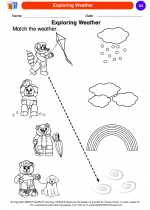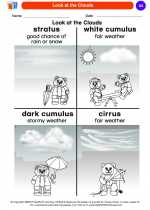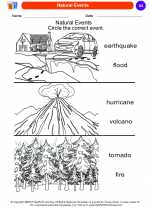Sand Dunes
Sand dunes are large mounds or ridges of sand found in coastal and desert areas. They are formed through the process of wind erosion and deposition.
Formation of Sand Dunes
There are four main factors that contribute to the formation of sand dunes:
- Beach or Desert Environment: Sand dunes can form in coastal areas where beach sand is blown inland, or in desert areas where there is an abundant supply of sand.
- Wind: Wind is the primary force that shapes and moves sand dunes. Strong winds pick up sand particles and carry them, depositing them when the wind slows down.
- Obstacles: Obstacles such as rocks, vegetation, or human-made structures can cause the wind to slow down and deposit the sand particles, leading to the formation of dunes.
- Sand Supply: There must be a constant source of sand in order for dunes to form and grow over time.
Types of Sand Dunes
There are different types of sand dunes based on their shape and formation. The main types include:
- Barchan Dunes: These dunes are crescent-shaped with the tips pointing downwind. They are commonly found in desert regions.
- Transverse Dunes: These dunes form in a series of long ridges that are perpendicular to the wind direction. They often occur in areas with strong, consistent winds.
- Star Dunes: These dunes have multiple arms and are shaped by winds blowing from different directions. They are typically found in areas with variable wind directions.
- Parabolic Dunes: These dunes have a U-shape with the tips pointing upwind. They are often formed in coastal areas with abundant sand and vegetation.
Ecological Importance
Sand dunes play a crucial role in stabilizing coastlines and providing habitats for a variety of plant and animal species. Their unique ecosystems are adapted to the harsh conditions of sandy environments and support diverse biodiversity.
Study Guide
Here are some key points to remember about sand dunes:
- Describe the process of wind erosion and deposition in the formation of sand dunes.
- Identify the different types of sand dunes and their characteristic features.
- Explain the ecological significance of sand dunes and their role in supporting biodiversity.
- Compare and contrast the formation of sand dunes in coastal and desert environments.
[Sand Dunes] Related Worksheets and Study Guides:
.◂Science Worksheets and Study Guides Kindergarten. Weather
Coloring Worksheet Calendar
Calendar  Coloring Worksheet
Coloring Worksheet Calendar
Calendar  Coloring Worksheet
Coloring Worksheet Day and Night
Day and Night  Coloring Worksheet
Coloring Worksheet Day and Night
Day and Night  Coloring Worksheet
Coloring Worksheet Exploring Weather
Exploring Weather  Coloring Worksheet
Coloring Worksheet Exploring Weather
Exploring Weather  Coloring Worksheet
Coloring Worksheet Look at the Clouds
Look at the Clouds  Coloring Worksheet
Coloring Worksheet Look at the Clouds
Look at the Clouds  Coloring Worksheet
Coloring Worksheet Moon & Stars
Moon & Stars  Coloring Worksheet
Coloring Worksheet Moon & Stars
Moon & Stars  Coloring Worksheet
Coloring Worksheet Natural Events
Natural Events  Coloring Worksheet
Coloring Worksheet Natural Events
Natural Events  Coloring Worksheet
Coloring Worksheet Sun and Shadows
Sun and Shadows  Coloring Worksheet
Coloring Worksheet Sun and Shadows
Sun and Shadows  Coloring Worksheet
Coloring Worksheet The Seasons
The Seasons  Coloring Worksheet
Coloring Worksheet The Seasons
The Seasons  Coloring Worksheet
Coloring Worksheet Things in the Sky
Things in the Sky  Coloring Worksheet
Coloring Worksheet Things in the Sky
Things in the Sky  Coloring Worksheet
Coloring Worksheet Weather Tools
Weather Tools  Coloring Worksheet
Coloring Worksheet Weather Tools
Weather Tools 

 Coloring Worksheet
Coloring Worksheet
 Coloring Worksheet
Coloring Worksheet
 Coloring Worksheet
Coloring Worksheet
 Coloring Worksheet
Coloring Worksheet
 Coloring Worksheet
Coloring Worksheet
 Coloring Worksheet
Coloring Worksheet
 Coloring Worksheet
Coloring Worksheet
 Coloring Worksheet
Coloring Worksheet
 Coloring Worksheet
Coloring Worksheet
 Coloring Worksheet
Coloring Worksheet
 Coloring Worksheet
Coloring Worksheet
 Coloring Worksheet
Coloring Worksheet
 Coloring Worksheet
Coloring Worksheet
 Coloring Worksheet
Coloring Worksheet
 Coloring Worksheet
Coloring Worksheet
 Coloring Worksheet
Coloring Worksheet
 Coloring Worksheet
Coloring Worksheet
 Coloring Worksheet
Coloring Worksheet
 Coloring Worksheet
Coloring Worksheet

The resources above cover the following skills:
EARTH AND SPACE SCIENCE (NGSS)
Earth’s Systems
Students who demonstrate understanding can:
Use and share observations of local weather conditions to describe patterns over time.